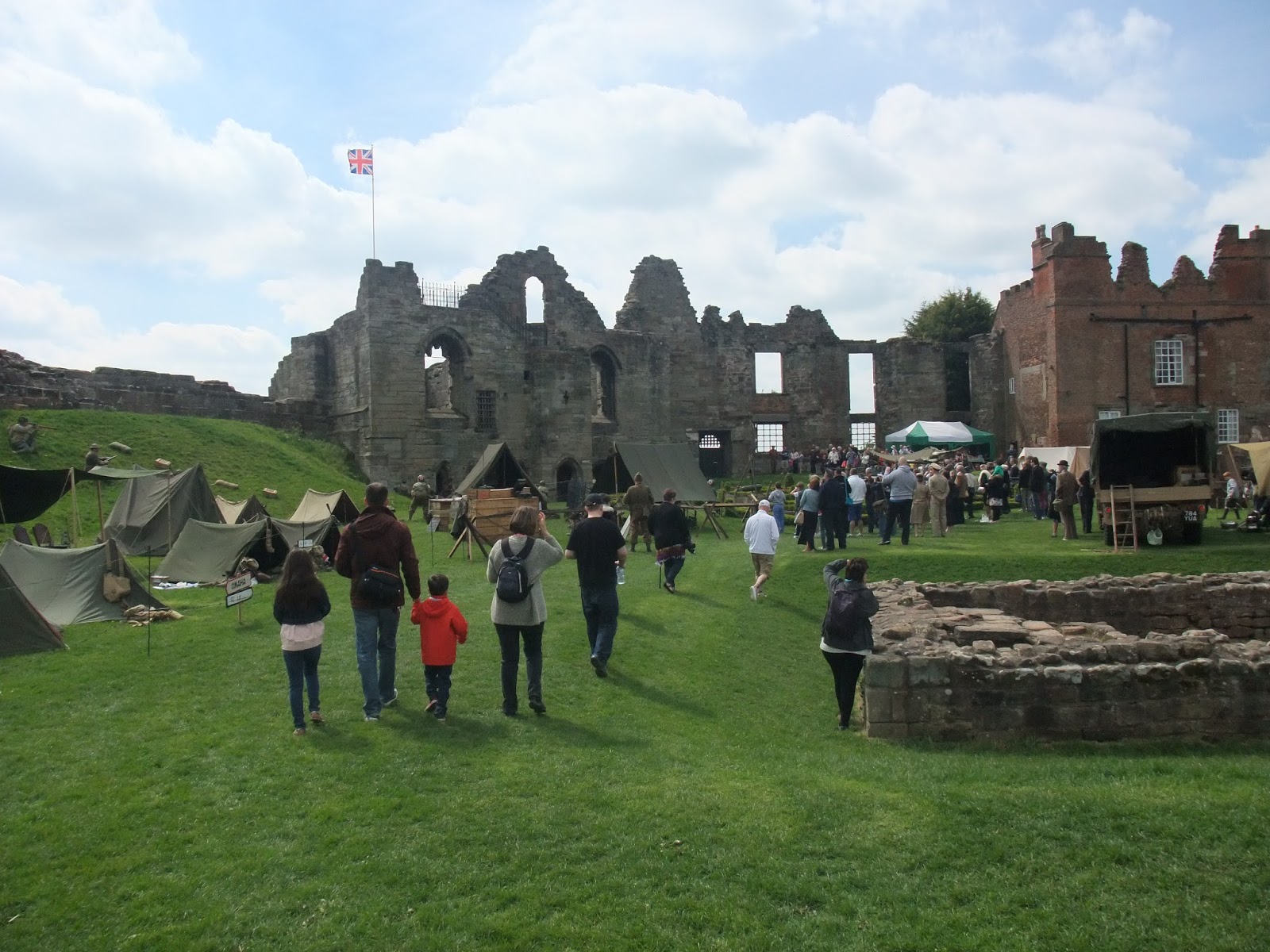It seems to be Mary Queen of Scots Year this year, at least for me. Earlier this year, I visited Tutbury Castle down in Staffordshire, one of the places where Mary was imprisoned during her time in England. It was apparently very run-down when the queen was there, and has gone only downhill since. Then in July I went to the National Museum of Scotland's imaginatively named temporary exhibition "Mary, Queen of Scots", which certainly did what it said on the tin. And then, a couple of days after that, I found myself on the way to another castle where the queen had been imprisoned, Lochleven Castle.
Here's a shot of the suviving parts of Tutbury Castle–there was a 1940s living history event being held there over the bank holiday weekend, and you can see some part of that going on in front of the best preserved parts of the structure. The building on the right is now used as a museum and tea shop and it was rather nice to stop there for a coffee and a cake on a bright summer's day.
Lochleven Castle is quite a different kettle of fish. For a start, it's in the middle of Loch Leven. The island is a lot bigger than it was in the 16th century because the loch has been partially drained since then. When Mary was here, the water came up almost to the base of the castle walls. The modern island is much larger and now pleasantly wooded.
It's also only accessible by a tiny ferry from Kinross. It can carry 12 passengers and runs every 15 minutes. Well, supposedly. If you follow Historic Scotland's Twitter feed, you'll have noticed that the service gets cancelled a lot, especially in high winds. There wasn't much in the way of wind on the day I was there, and apart from the wake of the ferry, the surface was as still as a mill-pond.
Looking from the curtain wall over to the tower house where Mary was held prisoner. You can see that the main entrance to the house is rather high, on the second floor rather than the first. Nowadays you can also enter at ground level.
Mary spent nearly a year here, before escaping in male disguise aboard a boat that had been stolen by some of her supporters. Sadly for the queen, there was no tea-room to welcome her at the loch's edge as there is today, and things continued to get worse from then on, defeated in battle at Langside, forced to flee England, imprisoned by her cousin and then finally executed. When I was a student at the University of Edinburgh, one of the lecturers in Scottish history liked to call the story of the Stuart Dynasty a soap-opera and Mary's episodes are surely among the most dramatic. But as for me, it's time to go back to Kinross for a bite to eat and an ice-cream before my journey home to Livingston.




No comments:
Post a Comment